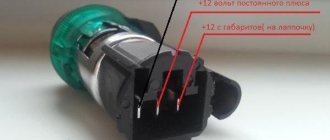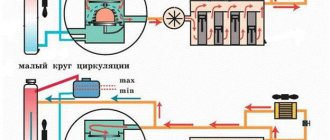Reliable operation of a car in winter conditions depends on many factors. The question of whether and how to insulate a car battery in winter is decided depending on the operating conditions of the car. If the car is used intensively during the day, the downtime is insignificant, does not exceed 4 hours, and the trip length is long, the battery is not afraid of the cold. It is necessary to insulate the battery if the frost outside is above -20 0 C, breaks in work are long, and trips are short. How to most effectively use the electrochemical process and engine heat is up to each driver to decide for himself.
Warming a car battery
The most favorable conditions for the electrochemical process in the battery are considered to be +25 ~ -15 0 C. If the temperature of the electrolyte decreases, each subsequent degree reduces the battery capacity by 1%. In severe frost, a battery without additional protection may not provide the necessary current pulse to start the engine. Therefore, most motorists who use transport to get to work and back are forced to insulate the battery in winter.
The effectiveness of insulating a car battery in winter depends on the chosen scheme. Suppose we have sewn a casing on the battery, completely isolating it from neighboring components. If the suit does not generate additional heat, then regardless of the material, the temperature will become equal to the surrounding air in 8 hours or less.
Electric heating using its own energy can drain the battery when not in use. You can use a thermal case for batteries with heating plates. At the same time, the plates heat up when the motor is running and insulate the battery, like heating pads, during idle time. Such insulation helps in maintaining battery performance in winter.
Why do we need thermal cases for batteries?
If the winter frosts are severe and the car is left in the cold for more than 8 hours, this can greatly reduce the battery capacity. To protect and insulate it, special devices are used - thermal bags and covers. They are inexpensive - you can find them from 500 rubles.
They protect against the negative effects of low temperatures and do not allow the battery to quickly discharge. As a result, it remains operational. Even after a very frosty night, the car owner starts the engine without any hassle.
By avoiding frequent discharge of the battery, this extends its service life. Battery heaters can simplify the winter operation of a car in harsh winters. Their use in mild climates is not necessary.
How else can you insulate the battery in a car for the winter?
If the radiator grille is not closed in winter, the cold wind blows through all parts of the engine compartment. Therefore, it is worth insulating the battery for the winter by blocking the air flow with cardboard, like a bumper. It should block the flow of cold air into the upper and lower pipes.
Is it possible to use insulation and build a canopy over the engine and battery with your own hands for the winter? Of course, the engine will transfer heat to the battery for a long time, being in a common cocoon. If you additionally insulate the hood with light fleecy material, the guarantee of heat retention in the engine compartment will ensure the functionality of the batteries in harsh winters.
How to insulate a car battery with your own hands
What material to choose so that it is a heat insulator, lightweight, and easy to process with your own hands. The battery case should be easy to disassemble and not take up much space in a cramped engine compartment. Insulation must be reliable. How can you insulate a car battery for the winter?
Some craftsmen use a backup battery that heats the nichrome thread in the wrapper. The element is used to heat the steering wheel and seats; it is not difficult to buy. It is necessary to connect several threads and wrap the battery. An AGM battery is well suited as an auxiliary battery. It can be recharged while the car is moving and the heating can be adjusted using a special toggle switch. Fur and felt are considered the best insulation materials. But they are less technologically advanced compared to modern polymer materials:
- foil plastic;
- splen;
- Styrofoam;
- polyurethane foam.
However, moderation must be observed; the battery must receive enough heat for an electrochemical reaction to occur. Insulating the housing yourself will not cost much, but will add confidence in the stable start of the engine.
Winter operation
The main rule for using a battery in severe frosts is that the vehicle’s electrical system is in good working order. Before the onset of cold weather, be sure to check the integrity of the wiring - in particular you will be interested in the wires laid between the generator, battery and starter.
However, breakdowns in other places cannot be ignored, since even a minor power leak can lead to a complete discharge of the battery in winter. Also, caring for your battery in winter includes periodically cleaning the terminals from oxides and dirt accumulated on them. They should be treated with fine-grained sandpaper, and then coated with a thin layer of lithol or other grease that conducts electricity.
Close attention should be paid to the generator - the output voltage should be measured to determine whether it can be used in winter. The normal voltage generated by a car generator should reach 14.5 V, although 13.8 V is considered the minimum possible level
Video on how to measure voltage on a generator:
If this value is lower, you should expect damage to the battery, and with a lower value, the battery simply will not be able to charge normally. Check the tension of the generator belt as well, as slipping can cause insufficient charging in winter. Finally, inspect the appearance of the unit - signs of overheating, which appear in the form of spots on the metal, indicate that the generator will soon require serious repairs.
You also need to check whether the battery meets regulatory requirements. Many motorists ask what the density of the battery should be in winter? Experts say that the norm for any climatic conditions is 1.27, although in summer small deviations from it to a lesser extent are allowed.
Electrolyte density table, depending on ambient temperature
If the results of your measurement show a slightly lower density, you should add electrolyte, recharge the battery, and then recheck after a few days of intensive use of the vehicle. If it is impossible to restore the standard performance of the battery, it will have to be replaced.
In some cases, preparing a battery for winter involves insulating it - this method is used if the temperature can drop below -40 degrees. Only use non-flammable material that does not conduct current and will not cause a short circuit.
The best option is fiberglass, formed in the form of thin mats - it can be used to make an additional shell that protects the battery from the influence of temperature fluctuations. It is necessary to ensure that the battery terminals remain open and are accessible for inspection or maintenance at any moment.
If you succeed in increasing the density in the battery for the winter, you need to use a gentle mode of operation of the vehicle’s on-board electrical network in the future. Immediately after starting, try not to turn on any devices to reduce the load on the battery.
Turn on electrical consumers after the engine has warmed up
Even if the weather is not conducive to a comfortable stay inside the car, try not to turn on the heater fan, heated rear window and other devices in the first 3-5 minutes. To quickly warm up the engine and interior, install an auxiliary heater and preheater, which will help cope with this task without creating a significant load on the vehicle's electrical system.
Does it always make sense to insulate a battery in winter?
If your car is used intensively, is it necessary to insulate the battery? Maybe it’s enough to cover the flow of cold air from the radiator? Equipped with a thermococoon, the battery still gets very cold during long periods of inactivity. It has no way to heat up from a running engine. And the colder the electrolyte, the more difficult it is to recharge.
Does it make sense to insulate only the battery? In winter, it is important to use a fully charged battery. Then even 50% of its capacity will be enough to start the engine. During the operating period, charging should be restored.
In order not to insulate the car battery in the car, you can use a winter battery with a higher capacity. It costs more, but there will be no problems with starting the engine in winter and no insulation will be required. There is no point in using a high-capacity battery in the summer.
Of course, if you are planning a winter run of thousands of kilometers, you need to insulate any energy source. During long drives in cold weather, the battery may lose temperature while driving. How to insulate the battery in a car with foil material? The shiny side should be directed towards the battery case - it reflects heat, preventing cooling.
Tests have shown that an initially warm battery recharges faster and wears out less. Experts advise insulating the battery in conditions of intermittent use. In cities where traffic is accompanied by standing in traffic jams, insulating the battery is not only possible, but necessary.
Of course, additional insulation of the battery in the car along with the engine and the engine compartment with your own hands is much more effective. But you need to use non-flammable materials. A small oil stain or an accidental spark can lead to a fire.
Conclusion
So, whether to insulate the battery or not is a matter of personal decision. If we consider the most budget-friendly options, then making a thermal cover yourself is the most optimal way. With its help, you can take into account all the features of the shape of the device and the free space under the hood.
However, a model with a heater is ideal. The reason for this is that the cover insulates heat loss, but at the same time prevents the battery from heating up from other heat sources, for example, the engine. For this reason, a regular case after an overnight stay will only prevent the battery from heating up, causing it to charge poorly.
As for the model with heaters, the device starts working immediately after starting the engine. The plates turn off as soon as the electrolyte heats up to 25 degrees above zero. When the element is turned off, the thermal protection prevents heat loss. Despite their advantages, such cases have a significant drawback - a high-quality model will cost a lot of money.
If we consider the option of a car blanket, then it should only be used when the car is parked. The reason for this is that it is impossible to control to what extent the electrolyte in the jars heats up.
The following video discusses the characteristics and operation of the heating thermal case:
Review of thermal case with battery heating
Is it worth insulating the battery?
If you have the opportunity to park the car in a warm garage or put the battery in a warm box at night, the question of how to insulate the battery in winter does not bother you. All other car enthusiasts will have to insulate the battery using a casing purchased or made by themselves.
Used:
- Comprehensive insulation of the engine, radiator and engine compartment. This will additionally have a beneficial effect on oil fluidity and the condition of the air and oil filters.
- You can use a hot antifreeze outlet for the battery - heated antifreeze heats the battery case, but the danger of overheating should be avoided.
- Only insulate the battery yourself or buy ready-made insulation.
In any case, measures should be taken to ensure that the battery is fully charged in winter and retains at least 50% capacity by the time it is started.
We offer you to watch the options for insulating the battery in winter in the video. How to insulate a battery for the winter with your own hands
How they work and what they are
All car enthusiasts know such a device as a car blanket. It is made of materials that can retain heat and reflect it inside the engine compartment, keeping the engine and battery from freezing at low temperatures. Battery protection is made from similar materials using the same principle.
All heaters come in two types: those that do not use battery power and those that are powered by a battery to retain heat. They differ in the material used for insulation:
- Foam based.
- Made from foil polystyrene foam.
- Covered with fabric.
- Finished with polyethylene sheathing.
- Equipped with additional heating elements powered from the machine’s on-board power supply.
The main function of a battery case, no matter what type it is, is to protect the device from sudden temperature changes. It is not able to warm the battery or prevent it from completely cooling over a long winter night, but it actively prevents a strong loss of capacity. And this is necessary for normal engine startup.
Many different modifications of thermal boxes are produced, which are selected according to the dimensions of batteries made in European, American and Asian production. The average cost does not exceed the equivalent of 10 dollars. One of the common models is EX BOX battery 50-65Ah, suitable for most popular batteries.
Tests
Well, the most interesting test of our battery heating. I also connected it to the power supply at room temperature. My pyrometer did not want to measure the temperature normally for a long time, the beam was simply reflected from the surface. Therefore, I had to stick on a piece of thermal paper from the parcel, which quickly turned black from the high temperature, but the measurements became more accurate. So, after about 5 minutes the temperature rose to 70 - 80 degrees, after 10 minutes to 100 - 105 degrees.
When I dripped water it boiled, I also touched it with a finger with saliva, the effect of an iron. The surface is really hot.
I decided to check it on the car, but for the second week now the temperature has been -2, that is, nothing, we need at least -20, or better yet -30 degrees, then it will be clear how this plate warms up in such frost. And what do you think I decided?
That's right, the refrigerator freezer, ours freezes to -30 degrees . I put the element in for 15 minutes, it froze to -29. Then I turned on the power supply, ran the wires through the rubber band, also waited 15 minutes and a miracle, it warmed up to + 50 degrees.
I didn’t wait any longer, because the efficiency is already clear, even in such frost it heats up perfectly (consuming essentially crumbs).
Is it possible to do it yourself?
The easiest way is to make a heat-insulating case with your own hands. Such a case can be easily sewn from several layers of felt. This method will retain heat for an additional 3-7 hours, depending on the outside temperature.
Even more affordable is making a battery box from polystyrene foam. You need to choose the size, seal all the joints tightly, and make a cover with holes for the wires.
The best way is to alternate foil insulation and polystyrene foam. First, the foil insulation of the required size is cut out and attached to the battery case. 2 cm of foam is placed on it. The outer layer is made again from foil insulation. This thermal chamber will reliably protect you from frost. However, the battery will not get any heat from the engine.
To make a thermal insulating case, you cannot use flammable items: cardboard, down jackets, fur. You can secure your thermal case with a thermal blanket.
Insulation with heat insulators is good if the car does not sit idle for a long time. When parked for a long time in the cold, the best way is to bring the battery indoors or use special heaters.
Coolant as a heater
Antifreeze circulates through the engine, lowering its temperature. Using a similar scheme, you can arrange heating of the battery. A branch in the form of a tube is made from any point in the cooling system, which is laid around the battery. Hot antifreeze (antifreeze) becomes an effective insulation material.
This scheme is used very rarely. It will be necessary to lay extra pipelines, and they may leak. It will be difficult to remove the battery for later maintenance. The possibility of overheating cannot be ruled out. Of course, to prevent this from happening, you can lay heat-insulating material between the battery wall and the tubes. But still, such heating will cause a lot of inconvenience.











